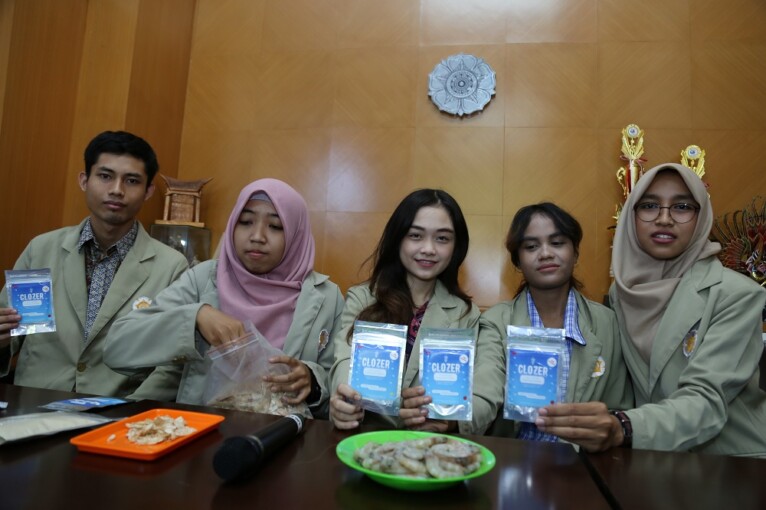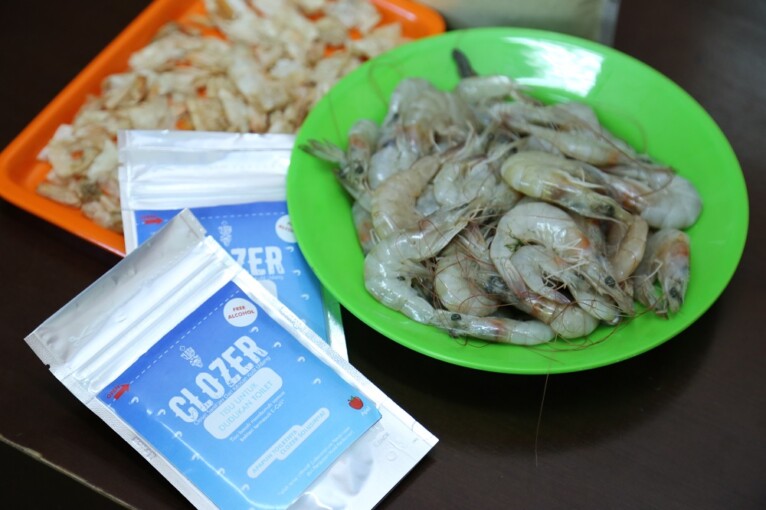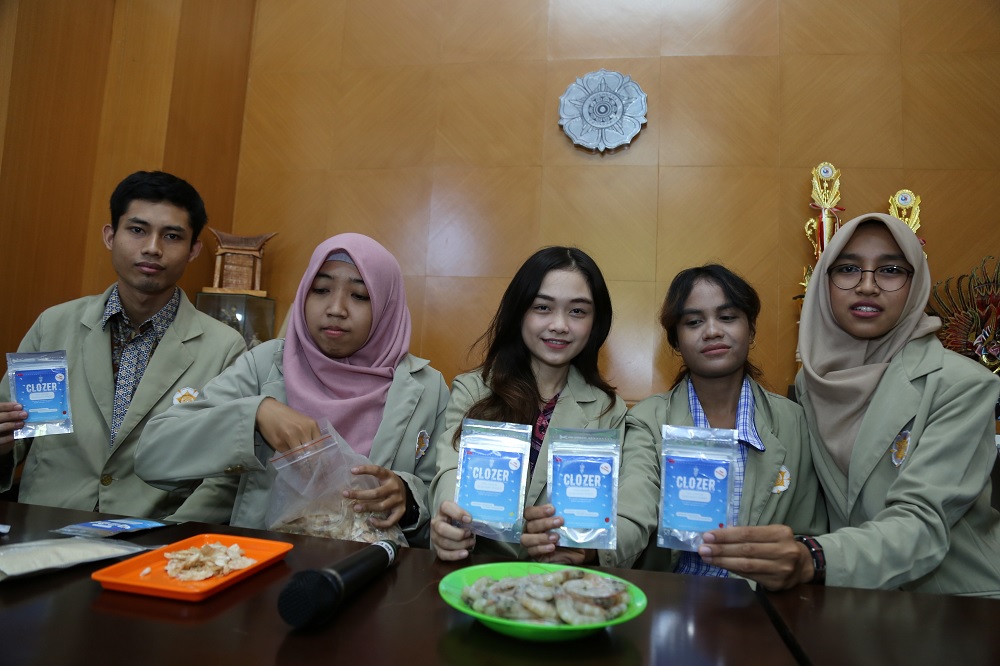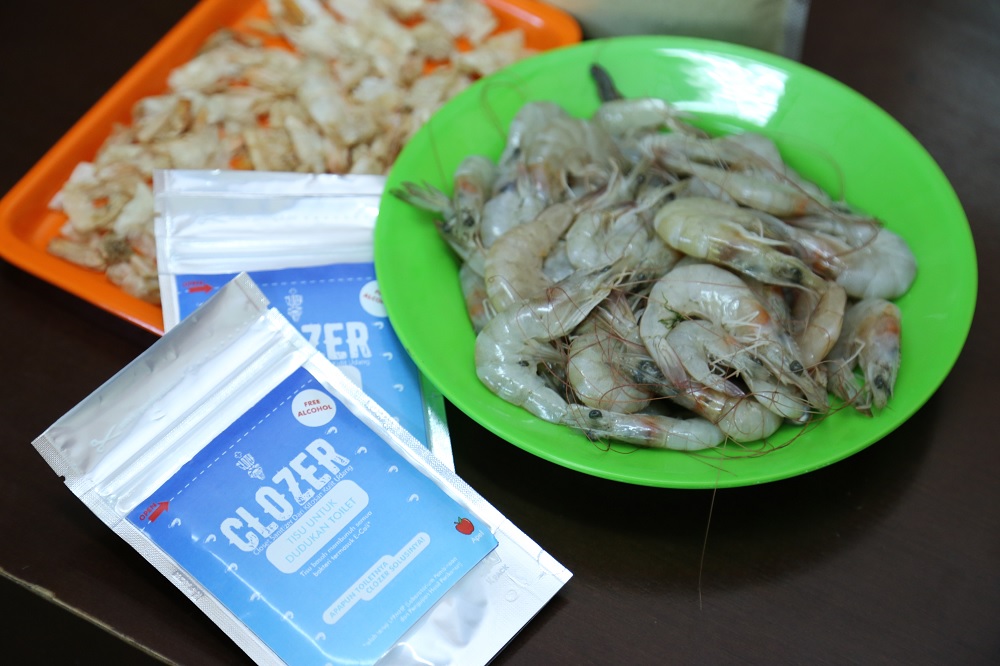A group of UGM students have made good use of shrimp shell waste to reduce the spread of bacteria in toilet.
The toilet sanitizer named as Clozer has been developed by four UGM students studying Fisheries, who are Andita Palupi, Muthia Restiningsih, Nafis Endiana Ramadhanti, and Nuzulia Izmi, and Chemistry student, Sigit Fitriyanto, under the guidance of Dr. Siti Ari Budhiyanti.
Andita said they were triggered to develop the product for concerns over public toilet sanitation which may harm the health of people.
“We started to do research and found that the shell of shrimp has anti-bacterial contents,” she told journalist on Thursday (7/6) in Fortakgama Room UGM.
Andita explained they chose the shrimp waste due to the plenty supplies, which are usually not used and dumped to the bin. “While in fact the shell of the shrimp has chitosan that can prevent bacterial growth,” she said.
The five of them later processed the chitosan from the shell into sanitizers by adding other compounds, which is later mixed together for two hours. They added some aroma then filter it to get clear sanitizer liquid.
“Clozer product has been laboratory-tested and it showed that it is effective to eliminate the E.coli and Salmonella bacteria. The Clozer tissue can kill by 80-90 percent of the bacteria without using alcohol,” said Andita.
The product is offered in wet tissue package in 4 aroma variants, which are lemon, lavender, apple, and pine. A pack of the product containing 5 wet tissues costs IDR 5,000.
“Currently, we sell it online in tokopedia and shopee. It can also be ordered via Instagram: closetclozer.id and Line: @xek3430w,” Muthia added.
The innovation by the students has earned grants for Student Creativity Program in Entrepreneur category from Higher Learning Directorate General.
Muthia said the product is suitable for everyone and it lasts for six months. To use it, people only need to wipe the toilet seat with the sanitizer beforehand.
“This product is another innovation beside the spray sanitizers that are already available in the market,” she concluded.






